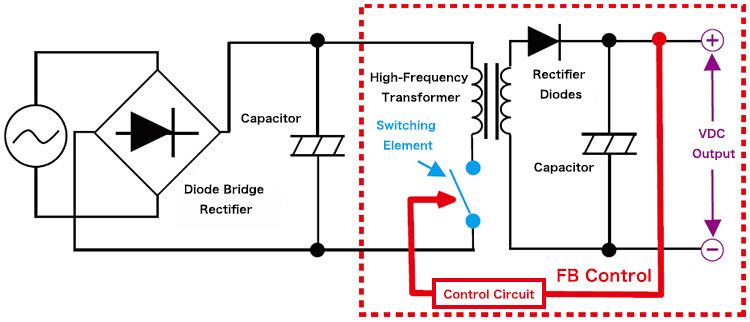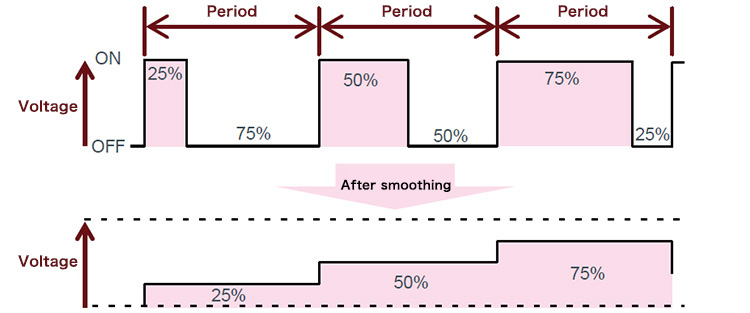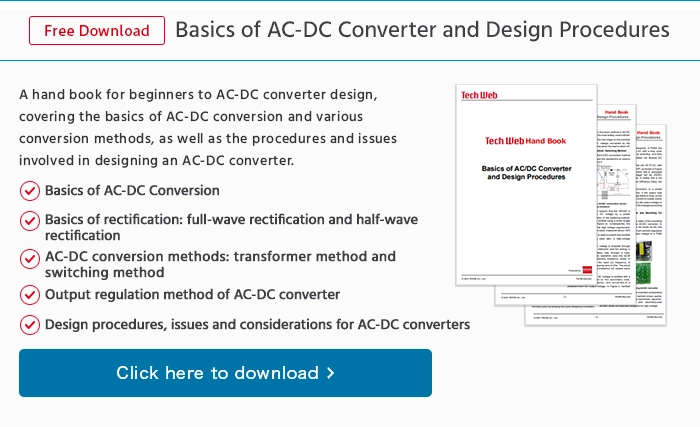acdc_what5
Feedback Control
What is feedback control?
Switching AC/DC converters carry out switching element control utilizing the actual DC output voltage value to ensure stable predetermined DC output. Feedback (FB) control is a mechanism for controlling switching elements by checking the output voltage.

【Switching-Type Circuit Configuration Example】
Feedback Control Circuit
Switching AC/DC converters rectify AC voltage with a diode bridge, then smooth the converted DC voltage using a capacitor. Subsequently, this high DC voltage is chopped (ON/OFF) by the switching element, then transmitted to the secondary side via step-down operation using the high-frequency transformer and smoothed again with a capacitor to obtain the predetermined DC output voltage (VDC).
The FB control circuit checks whether this actual output voltage matches the predetermined value.

【Output Voltage Smoothing】
When the actual output voltage is lower than the target value, the switching element is controlled so that the ON interval is longer. This will increase the output voltage value. Conversely, if the actual output is higher than the target value, control is carried out so that the ON interval is shorter.
In this way, the feedback control circuit continuously checks the actual output voltage and adjusts the ON/OFF time of the switching element based on this value to ensure stable output of the predetermined voltage.
electronics_tips_menu





